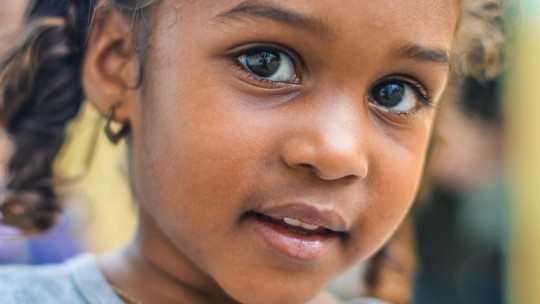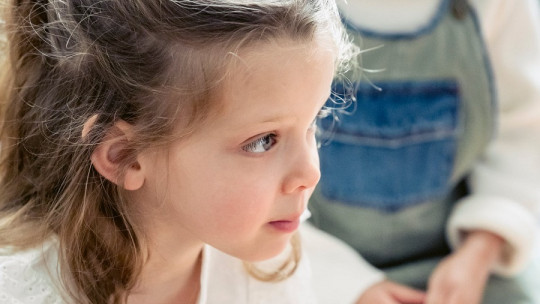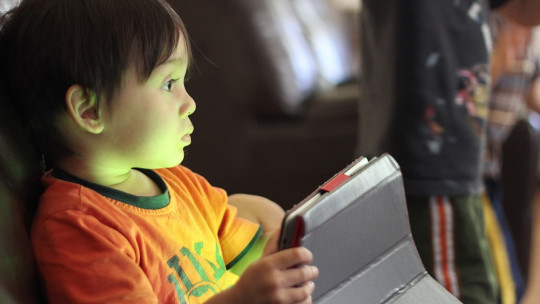
The ability to socialize and maintain positive contacts beyond merely family contacts, establishing links with the people around us and sharing positive situations, moments and experiences with them is essential for our complete development.
Friendships are going to be very important throughout life, but having someone with characteristics similar to your own with whom to share and experiment is especially relevant during childhood and adolescence. And in many cases, some children go so far as to make friends who do not really exist in the real world but who are of great importance to them: we are talking about imaginary friends It is about this concept that we are going to talk about throughout this article.
What is an imaginary friend?
An imaginary friend is considered to be any invisible character that does not exist in reality that is considered real or partially real by a child with whom he plays and interacts frequently and directly and who is named and recognized in front of other people. The interaction and consideration of the existence of this being by the minor may have a variable duration. Although we have talked about non-existent beings, sometimes the imaginary friend is an object or element to which the child gives the ability to be alive or interact, such as a doll.
The creation and maintenance of imaginary friends usually occurs in young children, between two and eight years old. The friend in question usually has a protective or playful function, their presence being typical of situations in which the child is playing or feels afraid. The character in question can be a child like him or her or animated beings, with animal or even fantastic characteristics. Generally, the friend begins to be forgotten or disappear when the minor begins to have more fluid and positive contact with children and make friends, although it may take some time for the friend to disappear.
Explanations for this phenomenon in childhood
The creation of imaginary friends by children has been an aspect researched with great interest throughout history, with different approaches to the matter. Initially there was the idea that it was treated and valued as the expression of some clinical problem, although research has shown that with exceptions this is not the case.
Initially Imaginary friends were considered to be the expression of emotional problems linked to deficiencies such as lack of affection from parents, loneliness or lack of people of the same maturational level or as a compensation mechanism for what children consider their weaknesses. Although in some cases this may be the case, especially in abandoned children or those who have suffered trauma, it has been observed that this phenomenon can appear in any type of context.
Authors such as Jean Piaget, known for his studies on child development and the phases of acquisition of different skills and mental abilities from a cognitive perspective, interpreted the presence of imaginary friends as an elaboration of the child as an attempt to explain reality. which he was not able to understand, having difficulties separating what is real from what is imaginary at the typical age of appearance of this phenomenon (between 3-6 years). However the children Yes, they are able to separate reality from fiction at these ages often knowing that their imaginary friends are not perceptible to anyone but them or even that they are a product of fantasy.
Another more recent theory states that imaginary friends are simulations of real beings that children use to practice real interaction situations and that serve to improve their understanding of the theory of mind (assuming and understanding that others have opinions, thoughts and perspectives different from their own).
Is it something pathological?
Although it does not occur in all children, the presence of imaginary friends is something that is generally accepted as something normal that will pass over time. However, many parents show great concern when it happens to their children due to the possibility of witnessing some type of mental alteration or pathology.
This concern makes some sense, since the truth is that the concept of imaginary friends supposes the existence of some characteristics that could resemble those of a hallucination or delirium (the existence of a being that does not exist beyond is perceived and considered real). of the subject’s own mind, which is maintained over time).
However, In the vast majority of cases it is not a pathological event but a normative one being extremely common (although there is no consensus, some studies indicate that even around half of children could have them) and that usually occurs at a stage of life in which magical thinking is usually very active and in which there is great creativity.
Furthermore, the friend in question may play a role in child development: relieve needs for company, project your ideal self or your own self-image, practice for real interactions, rehearse your theory of mind and the ability to understand others, or release anxiety by generating a fictional world in which you can abstract yourself from various problems.
In fact, some studies even seem to indicate that the generation of imaginary friends (as long as it is not the expression of emotional shortcomings or generates an active withdrawal from real contact with others), far from being pathological, can even allow the development of different skills, improving your future social competence, apathy, abstraction and creativity.
To do?
Many parents may wonder How to act when faced with the presence of imaginary friends in your children, being a normal and legitimate concern. But as a general rule, having imaginary friends is not something that requires treatment.
It is not advisable to punish, deny or ignore the existence of the imaginary friend, although it is worth evaluating the type of friend or personality they have. Nor try to force the child to do activities that take up her time to avoid the existence of this friend. It could also be useful to try to encourage (without it becoming a forced and insistent practice that generates anxiety in the child) the approach to situations where she can interact with other children.
The topic must be treated with respect. We must keep in mind that it may be a projection of our child’s fears or even of a way to connect with the world and communicate with you so it may be relevant to listen to when it appears and the opinions that the child says his friend has regarding the world.
Less common aspects that can generate a response and that should not be allowed is the fact that the imaginary friend is used as a justification or scapegoat for the aversive acts themselves.
It may also be more worrying if it is observed that The child prefers to interact with his invisible friend than with the rest of the world and this leads to isolation, or the friend’s personality is extremely violent or destructive. Although there are cases in which imaginary friends remain until adolescence, it is not very common and it would be necessary to consider whether the minor could be having some type of problem.








